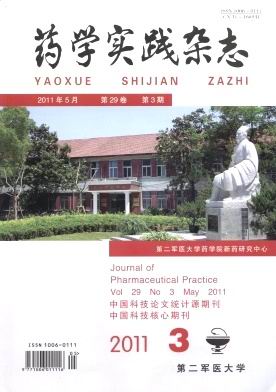The clinical effect of TE chemotherapy regime, with Shenmai injection in the treatment of advanced breast cancer
- Received Date: 2010-06-22
- Rev Recd Date: 2011-01-11
-
Key words:
- Shenmai injection /
- breast cancer /
- TE program /
- clinical observation
Abstract: Objective To investigate the efficacy of Shenmai injection combined TE chemotherapy regime in the treatment of breast cancer and the influence to the quality of life in breast cancer patient. Methods 22 patients with pathologically confirmed advanced breast cancer aged from 34 to 72 were randomly divided into experimental group (TE plus Shenmai injection treatment group) and the control group (only with TE chemotherapy group). The efficacy ,side effects and blood indices were observed and analyzed. All patients received two or more cycles of treatment. SPSS10.0 statistical software was used to statistical analysis. Results 22 cases could be evaluated.The effective rate of treatment group (CR+PR) was 54.55%, and the rate of control group was 63.64%. There was no significant difference between two groups (P>0.05); clinical benefit rate was 81.82% in treatment group, and 72.73% in control group, which had no significant difference between groups (P>0.05). The main adverse events in both groups were from the blood system. compared with the control group, which had statistically significant (P<0.05) between two groups. Other adverse reactions had the similar incidence in two groups and had not statistically significant (P>0.05). Conclusion TE Shenmai injection in the treatment of breast cancer was effective and well tolerated, plus Shenmai injection could improve the quality of life in cancer patients, reduce the chemotherapy-induced hematological toxicity and non-hematologic toxicity.
| Citation: | WANG Jing, ZHAO Na-ping, SHU Li-xin, LIU Bin, ZHANG Wan-lu, YAN Tian-hong, PAN Yong-hua, ZHANG Li. The clinical effect of TE chemotherapy regime, with Shenmai injection in the treatment of advanced breast cancer[J]. Journal of Pharmaceutical Practice and Service, 2011, 29(3): 184-187,203. |







 DownLoad:
DownLoad: